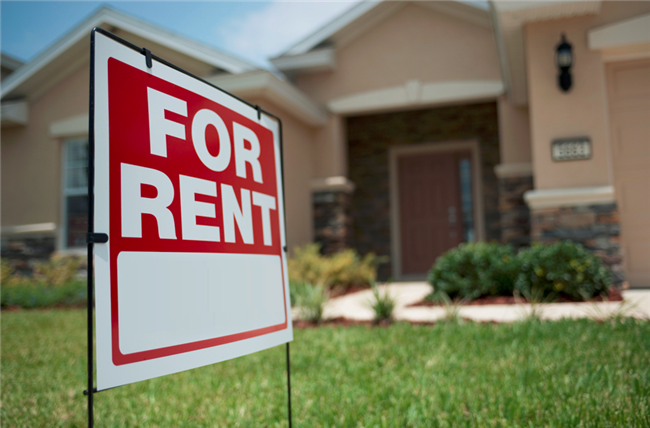Virginia’s Fairfax County remains one of the most desirable places to live in the Washington, D.C., metro area. It’s a city where vibrant neighborhoods and a booming economy meet, making it a dynamic and exciting place for real estate investors. Due to several factors that impact rental demand and housing prices, the local real estate market remains competitive.
As a landlord in Fairfax, VA, knowing these elements will help you establish and negotiate rent with confidence. Continue reading below as we discuss several important factors that impact the rental market here in Fairfax, VA, along with other important details.
Key Factors Influencing Rental Demand in Fairfax, VA
Sustained Rental Activity
The increasing percentage of renters compared to homeowners in Fairfax County is a result of factors including unaffordable homeownership, a higher cost of living, and a desire for the flexibility of having options. The demand for rental housing has been particularly strong in locations with well-kept rental properties, proximity to amenities, well-traveled commuter routes, and transit-oriented neighborhoods.
Rental prices in Fairfax have also been steadily rising. In mid-2025, the average rent for all property types was around $2,800 to $2,900, and rental prices continued to trend upward each month and year-over-year in key corridors of the county, such as Tysons, Annandale, Centreville, and Merrifield. Although rents were falling in many national markets, rents were rising in Fairfax, which demonstrated a positive local equilibrium of strong demand due to economic stability, alongside restricted overall housing supply.
High Rental Price
As of 2025, the average rent in Fairfax is approximately $2,484-$2,900/month, with some variation by neighborhood and housing type. Certain neighborhoods, such as Pohick and Fairfax Acres, have median rents in the range of $2,800 to $3,000. Despite high rents, there remains strong rental demand; however, indicators suggest that tenants are reaching their limits of affordability, which is impacting how landlords price and manage rental properties.
High rents are partially attributable to a supply/demand imbalance; the population in Northern Virginia is growing much faster than available new housing, and there are few viable housing options that are affordable. Landlords have been able to demand high rents because properties that are well-kept or updated are in high demand, particularly with housing amenities that support hybrid work styles.
At the same time, rents that are too high create significant price resistance and consideration among tenants, resulting in landlords who are either reliant on strategic pricing, flexible leases, or careful management of vacancies. High rental costs are also contributing to ongoing affordability challenges for lower-income renters, which creates a risk of eviction from housing or a demand for smaller or more affordable housing units. In light of this, it’s important to hire a proactive property management team in Fairfax to help foster good tenant relationships and minimize turnover expenses.
Economic Uncertainty
Economic uncertainty, stemming from federal government layoffs and employment disruptions, has contributed to a cautious atmosphere in the rental market. Even with concerns over employment impacts, government layoffs, and economic uncertainty, rents in the Fairfax and Northern Virginia area have either leveled off or experienced slight increases in rental rates. Landlords, in turn, were motivated to offer flexible lease terms and conduct thorough background checks on tenants. Demand is noted to be higher in properties that have a space for a home office and/or properties in close proximity to commuter routes, indicating shifts in the work environment.
Rent growth could flatten or, at a modest pace, decelerate as some renters reach their own affordability limits, especially in the luxury or high-end segment of the rental market, which may lead to longer vacancies. Some investors view build-to-rent options as a sustainable solution to meet the growing rental needs of a neighborhood. Meanwhile, home prices and rents in Fairfax County continue to increase moderately, but concerns persist about the screening behavior of buyers and renters amid economic uncertainty. Fairfax rental prices average between $2,800 and $2,900, with variability depending on property type and location; nonetheless, demand remains increased and rent pressures persist.
Why Understanding Rental Demand Matters for Landlords and Tenants?
Knowing whether there is demand for rental properties will give landlords the ability to raise occupancy rates and rental income as they can choose an appropriate rental rate to be competitive. This is particularly relevant if the property is located near commuter ways and local amenities valued by collectors and tenants. Landlords will also be able to anticipate tenant preferences, such as home office spaces, as work structures shift with the adoption of hybrid work models.
Understanding local economic factors, such as federal layoffs and migration patterns, will help landlords mitigate risk. For example, landlords may offer flexible lease terms or incentives to stay and retain their tenants during times of economic uncertainty. The current demand trends will help you make investment decisions and property management strategies that align with the market.
For tenants, knowledge of rental demand can assist with budgeting and planning, as rents in Fairfax and Northern Virginia continue to trend upward. It serves as a reminder of the significance of location, property features, and affordability in selecting new rentals, as tenants adjust to new commuting and lifestyle surroundings.
Understanding demand trends can also help tenants estimate when to enter the rental market and what, if any, concessions or lease terms to consider, especially in tight or soft markets. Furthermore, it provides a perspective on the larger residential housing options, including instances where it may be financially advantageous to purchase rather than rent a home.
How Can Property Managers Help to Reduce Rental Vacancies?

When it comes to rental property ownership, vacancy is the silent profit killer. A unit’s daily vacancy results in lost revenue as well as additional costs for everything from utilities and cleaning to marketing and upkeep. One of the most important tactics for long-term success for rental property owners seeking to maintain a consistent revenue stream is lowering vacancy rates.
This can be particularly challenging, though, especially when balancing other obligations. A seasoned property management firm can help with that. A competent property management business reduces vacancy rates and eventually increases revenues by utilizing its cumulative expertise, repeatable procedures, and industry knowledge.
First, retaining quality tenants is an effective strategy to lower vacancy. Each time a resident vacates, there are turnover costs, cleaning costs, and even weeks or months of lost rent. Retaining the proper tenants reduces turnover and increases stability. One easy way to demonstrate your presence and responsiveness to residents is to check in with them on a regular basis. Increasing tenant satisfaction involves proactive upgrades, prompt response to repair requests, and empathy when addressing issues.
Performing in-depth checks of tenants’ backgrounds, credit, income, and rental history ensures the selection of financially viable tenants who are likely to stay long-term. Regular updates, curb appeal improvements, and minor enhancements to the property will keep it looking great and ready for market, which encourages prompt tenant interest. Renting at market comparisons will also avoid prolonged vacancies due to being overpriced.
High-quality photographs, engaging descriptions, videos of the property, and aggressive marketing practices will provide you with the maximum pool of prospects for your property. Responding to inquiries in a timely manner, addressing repair requests quickly, and communicating with your clients will improve the tenant experience and enhance your professional reputation. Additionally, offering promotions, flexibility with leases, or incentives such as waived fees can enhance your pool of potential tenants. Partnering with local businesses and organizations can also help expand your outreach. Depending on your property type and size, property management and/or vacancy software can help you streamline and automate your operations.
Final Thoughts
Fairfax, Virginia, rental market is influenced by several key variables. This includes the state of the economy, population growth, employment prospects, and housing demand. These factors guarantee that Fairfax County will always be a competitive and appealing real estate market. That’s why finding the ideal rental property for a tenant’s unique needs is made much simpler by being aware of these criteria and keeping up to date.

